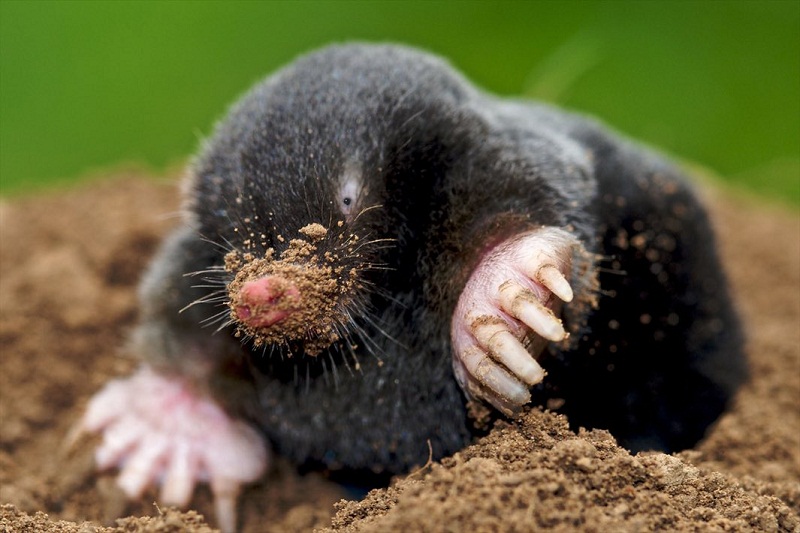Tumps of tunnelling moles reveal the past

The Trundle, West Sussex Ramparts’ busy archaeologists send forth iron age pottery, shells and bones as they excavate. As we walked the perimeter of the ramparts, we noticed that the cropped turf-covered contours below were heavily tracked with molehills. We came across an area of fresh tumps, the newly excavated soil still damp and dark like coffee grounds. A shuddering movement caught our attention. Soil was spewing over the top of one of the conical mounds like an erupting volcano. With one final thrust, an upturned, flattened, almost porcine, pink nose emerged, twitching as it scented the air. With pinhead eyes just one millimetre in diameter, moles are unlikely to possess a great deal of visual acuity. Nor can they hear very well. But they are able to detect vibrations in the ground. We crept forward, soft footed, hoping for a closer look at the “little gentleman in the black velvet waistcoat”.* We managed to get within a metre of the mole before it sensed our approach and swiftly withdrew its bewhiskered snout. The Trundle, an iron age hill fort, enclosing and partly overlaying a neolithic causewayed enclosure, has a long and fascinating history. It was clear from a closer inspection of the expelled spoil that the moles were enthusiastic, if unwitting, archaeologists. Former excavations of the earthworks have revealed several ancient rubbish pits, and it looked as if the moles’ tunnelling had unearthed a plethora of midden material. We spotted snail shells, porous with age and bleached beyond white, slivers of bone the colour of aged parchment, and teeth that appeared bovine and ovine in origin. There were tiny fragments of Romano-British ware too, and sherds of flint-gritted iron age pottery, orangey brown on one side and oxidised on the other, suggesting they had broken off cooking vessels that had blackened on the fire. Perched atop one heap was a flint scraper the size and convex shape of a toenail. Small flakes had been chipped away to create a sharp working edge, which had become blunter with use. Our finds were nothing more than casually discarded rubbish, but there was still something thrilling about touching a piece of history, holding something in the palm of my hand that was last handled by another human thousands of years ago.
Read More: http://www.theguardian.com/environment/2017/apr/14/tumps-of-tunnelling-moles-reveal-the-past#img-1

